Guide to Psychological Safety in the Workplace 2025
Did you know that organizations prioritizing psychological safety in the workplace see a 40% jump in innovation and a 27% drop in turnover? As we move into 2025, the need for psychological safety in the workplace has never been greater. Teams that feel safe to share ideas, ask questions, and voice concerns perform better, adapt faster, and enjoy higher well-being.
This guide will show you how to build and sustain psychological safety in the workplace, step by step. You’ll discover its core benefits, current trends, common barriers, practical implementation strategies, leadership essentials, measurement tools, and what the future holds. Ready to transform your organization? Start by learning more at Accountability Now.
Understanding Psychological Safety: Definition and Core Benefits
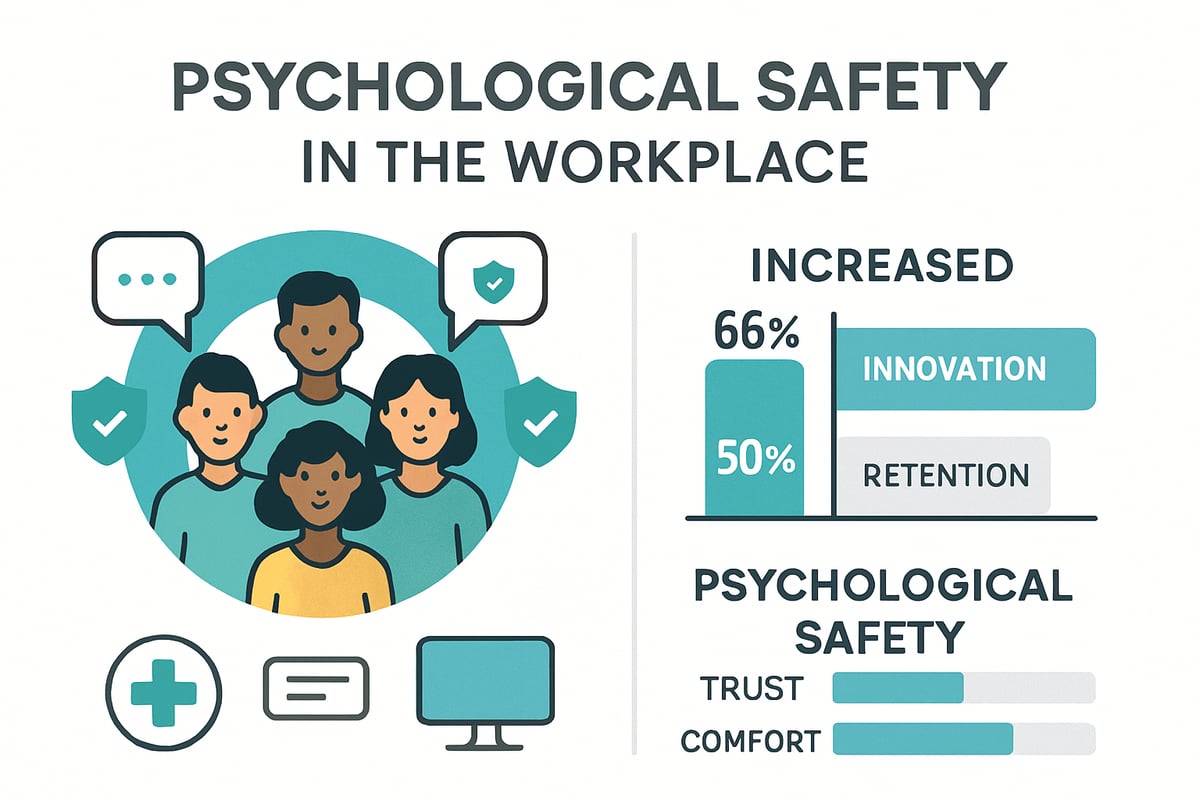
What Is Psychological Safety?
Psychological safety in the workplace is the shared belief among team members that it’s safe to speak up, share ideas, raise concerns, and admit mistakes without fear of embarrassment, rejection, or punishment. This concept, pioneered by Harvard professor Amy Edmondson, has become foundational for understanding how teams learn and perform.
While psychological safety in the workplace is often confused with trust or comfort, it is distinct. Trust is about expectations between individuals, while comfort can signal a lack of challenge. Psychological safety, in contrast, is about group norms that encourage candor and learning even when stakes are high.
Consider a hospital surgical team. When nurses feel empowered to question a surgeon’s plan, patient outcomes improve. Similarly, in tech, teams at Google found that open dialogue led to more breakthrough products. These environments didn’t just feel friendly—they enabled risk-taking and learning.
For a deeper exploration of psychological safety in the workplace, see Psychological Safety at Work, which details practical strategies and research insights.
Why Psychological Safety Matters in 2025
Psychological safety in the workplace is now recognized as a key driver of high-performing teams. Google’s Project Aristotle revealed that teams with strong psychological safety consistently outperformed others, regardless of individual talent. Recent studies show workplaces with high psychological safety report a 27% reduction in turnover and a 40% increase in innovation metrics, according to HBS Online.
Employee engagement, creativity, and retention all benefit when people feel safe to contribute. As remote and hybrid work become the norm, digital transformation accelerates, and younger generations enter the workforce, psychological safety in the workplace is more vital than ever.
Diverse and inclusive organizations thrive when psychological safety in the workplace is prioritized. It enables underrepresented voices to be heard, reduces attrition, and fuels innovation. The modern workplace demands environments where everyone can challenge ideas, ask questions, and learn from mistakes.
Below is a summary of core benefits:
| Benefit | Impact on Organization |
|---|---|
| Increased Innovation | Higher rate of new ideas |
| Improved Retention | Lower employee turnover |
| Enhanced Engagement | More motivated teams |
| Better Collaboration | Stronger team relationships |
| Inclusion & Diversity | Fairer, more open workplaces |
In 2025, organizations that embed psychological safety in the workplace will be positioned for resilience, adaptability, and sustained growth.
Trends and Challenges in Workplace Psychological Safety (2025 Update)
The landscape of psychological safety in the workplace is shifting rapidly as organizations adapt to new realities in 2025. Leaders must understand not only what drives progress, but also what stands in the way. Let’s explore the latest trends and persistent challenges shaping this critical arena.
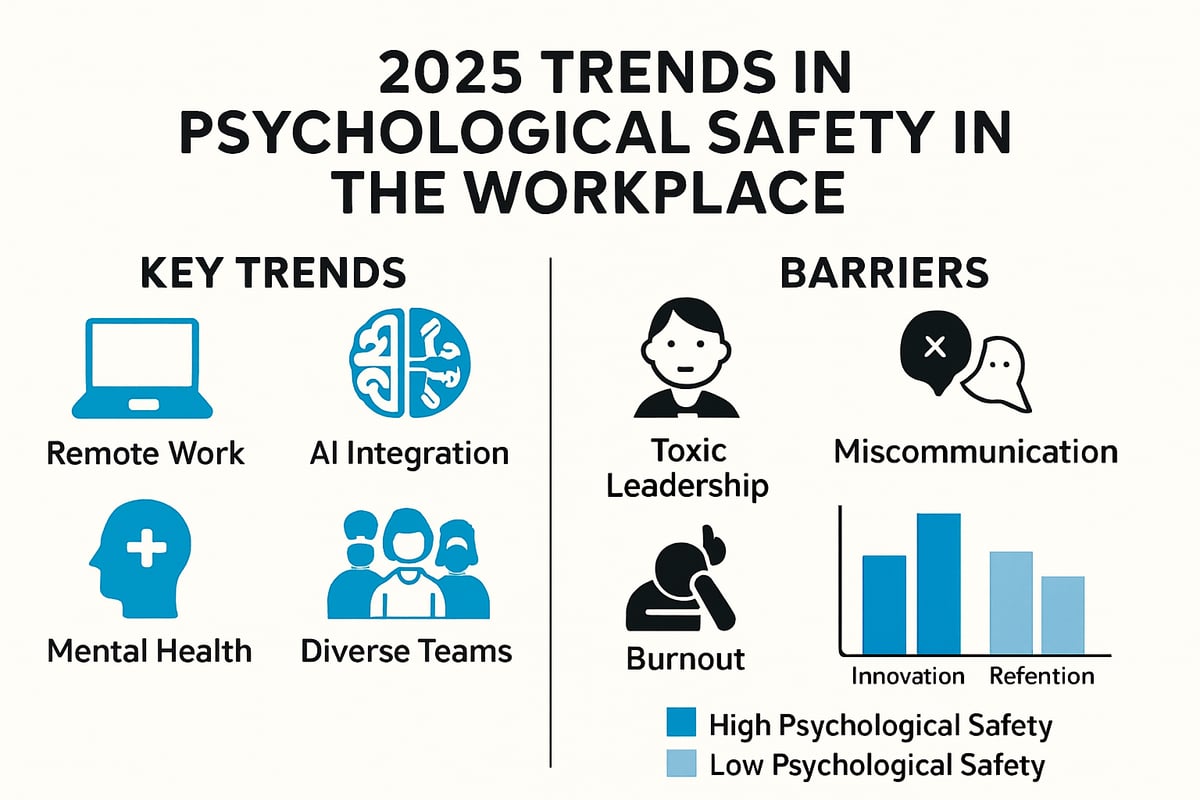
Emerging Trends Shaping Psychological Safety
Hybrid and remote work models are now the norm, transforming how teams connect and communicate. This shift means psychological safety in the workplace depends on intentional strategies to maintain trust and openness across physical and digital spaces.
AI and digital communication tools are also reshaping team dynamics. Platforms that enable real-time feedback and anonymous input can foster transparency, but they also risk depersonalizing interactions if not used thoughtfully. Organizations that leverage these tools to facilitate inclusive dialogue see stronger psychological safety in the workplace.
Mental health and well-being have moved to the forefront. Post-pandemic, leaders recognize that supporting psychological safety in the workplace is essential for employee resilience. Flexible schedules, access to counseling, and open conversations about stress are now baseline expectations.
Industry trends add further nuance. In healthcare, psychological safety in the workplace is vital for error reporting and patient outcomes. In tech, it drives innovation and cross-functional collaboration. Education faces unique hurdles, balancing student needs with faculty well-being.
Consider this table summarizing key trends:
| Trend | Impact on Psychological Safety |
|---|---|
| Hybrid/Remote Work | Requires new trust-building practices |
| AI & Digital Tools | Opens feedback, but may isolate |
| Mental Health Focus | Promotes open dialogue |
| Industry-Specific Needs | Drives tailored safety strategies |
As digital transformation accelerates and generational shifts continue, maintaining psychological safety in the workplace is more important than ever.
Common Barriers and Risks
Despite progress, significant barriers to psychological safety in the workplace remain. Fear of speaking up is widespread, especially in hierarchical cultures where mistakes are penalized. According to recent data, over 60% of employees hesitate to share errors with their managers, stifling both learning and innovation.
Toxic leadership and microaggressions undermine psychological safety in the workplace. When leaders dismiss concerns or retaliate against feedback, trust erodes quickly. Virtual teams face additional risks: miscommunication, isolation, and fewer informal interactions can leave employees feeling unsupported.
Real-world failures highlight these challenges. Organizations with poor psychological safety in the workplace often see confidential concerns ignored, leading to project breakdowns and high turnover. Burnout and disengagement are frequent outcomes when employees feel unsafe to voice ideas or admit mistakes.
For a deeper look at the impact of toxic leadership, see Overcoming Toxic Leadership, which explores real stories and strategies for change.
To build a resilient culture, companies must address these risks head-on, ensuring psychological safety in the workplace is not just a value, but a daily reality.
Step-by-Step Guide to Building Psychological Safety in the Workplace
Building psychological safety in the workplace is no longer optional in 2025—it is a strategic imperative. To create an environment where everyone feels heard, respected, and empowered, organizations need a clear, actionable roadmap. Follow these six essential steps to embed psychological safety in the workplace, drive innovation, and boost team performance.
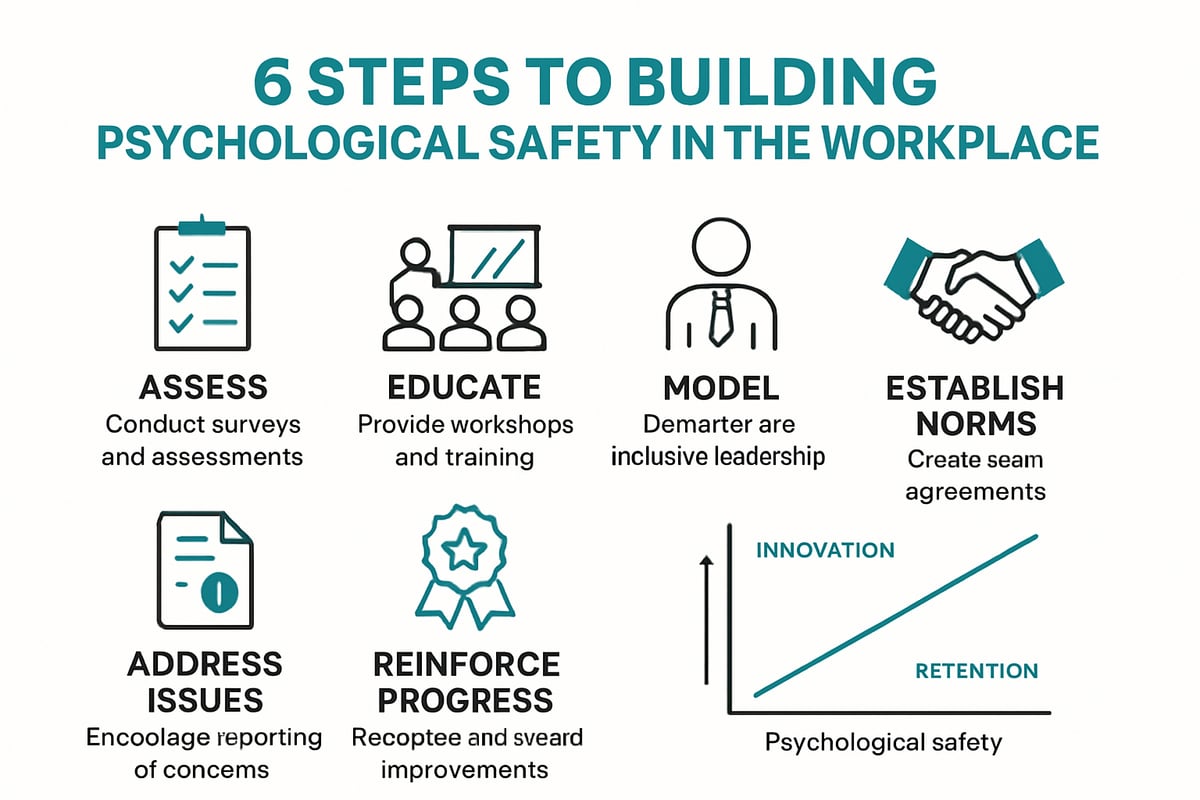
Step 1: Assess the Current State
Begin by evaluating the existing level of psychological safety in the workplace. Use anonymous surveys, such as Edmondson’s Team Psychological Safety Survey, to gauge how comfortable employees are sharing ideas or concerns. Complement quantitative data with qualitative insights from interviews, focus groups, or direct observations.
Here’s a quick comparison of assessment tools:
| Tool | Type | Purpose |
|---|---|---|
| Edmondson’s Survey | Quantitative | Measures team safety perceptions |
| Focus Groups | Qualitative | Explores team experiences |
| 1:1 Interviews | Qualitative | Uncovers specific concerns |
Analyze results to identify patterns and highlight strengths or areas needing improvement. This baseline will inform your next steps and help you track progress in psychological safety in the workplace.
Step 2: Educate and Raise Awareness
Awareness is the foundation of psychological safety in the workplace. Host interactive workshops focusing on psychological safety, active listening, and inclusive communication. Use real-world case studies and role-playing exercises to make concepts relatable.
Recommended resources include:
- Psychological safety research summaries
- Online courses (e.g., Coursera)
- Articles from thought leaders
Share these resources widely and encourage open discussion. When employees understand the value of psychological safety in the workplace, they become more invested in creating a supportive culture.
Step 3: Model Vulnerability and Inclusivity
Leaders and team members must model vulnerability to set the standard for psychological safety in the workplace. Encourage everyone, especially managers, to admit mistakes, ask for feedback, and be open about uncertainties. This behavior signals that it is safe to take interpersonal risks.
Highlight leaders who champion inclusivity by actively seeking input from all team members, regardless of role or tenure. Consider leveraging Team Coaching for Workplace Culture to strengthen trust, psychological safety, and collaboration within teams.
By consistently modeling these behaviors, organizations reinforce the message that psychological safety in the workplace is a shared responsibility.
Step 4: Establish Clear Norms and Practices
Co-create team agreements that outline expectations for respectful communication and constructive conflict. These norms should be developed collaboratively to ensure buy-in from all members and reinforce psychological safety in the workplace.
Implement regular check-ins and post-project debriefs to maintain open communication. Encourage ongoing feedback loops and maintain open-door policies so employees feel comfortable raising concerns.
Real-life example: A tech company introduced weekly retrospectives to discuss successes and challenges, which led to improved transparency and psychological safety in the workplace.
Step 5: Address and Resolve Issues Promptly
Set up confidential channels for reporting concerns related to psychological safety in the workplace. Train managers in conflict resolution and bias mitigation to address issues quickly and fairly.
Track incidents of exclusion, bullying, or retaliation, and respond with transparency. Addressing problems swiftly demonstrates commitment to employee well-being and helps sustain psychological safety in the workplace.
Encourage employees to speak up without fear, reinforcing that their voices matter.
Step 6: Reinforce and Sustain Progress
Recognize and reward behaviors that contribute to psychological safety in the workplace. Integrate psychological safety metrics into performance reviews and leadership evaluations.
For continuous improvement, reassess safety levels regularly and adapt strategies based on feedback. Share results transparently with teams and celebrate progress.
Sustaining psychological safety in the workplace requires ongoing effort, but the payoff is significant: higher engagement, lower turnover, and stronger business outcomes.
The Leader’s Role: Fostering and Sustaining Psychological Safety
Leaders are the cornerstone of psychological safety in the workplace. Their actions, words, and attitudes set the tone for what is acceptable and encouraged within teams. When leaders actively cultivate psychological safety in the workplace, teams innovate more, collaborate better, and feel empowered to take risks. Let’s explore how leadership drives this essential culture shift.
Leadership Behaviors That Drive Psychological Safety
Effective leadership is the foundation for psychological safety in the workplace. Leaders who model openness, curiosity, and vulnerability inspire others to do the same. The most successful leaders consistently:
- Practice active listening, making every team member feel heard.
- Demonstrate empathy, understanding diverse perspectives.
- Communicate transparently about challenges and decisions.
- Show humility by admitting mistakes and seeking input.
Research supports these behaviors. Teams with inclusive leaders are 17% more likely to report high psychological safety. In organizations where leaders prioritize psychological safety in the workplace, employees are more willing to share new ideas and flag potential issues early.
Leaders who invite feedback and acknowledge uncertainty foster trust. This environment encourages risk-taking and learning, which are critical for innovation and resilience. Ultimately, leadership’s influence on psychological safety in the workplace cannot be overstated.
Training and Development for Leaders
Building psychological safety in the workplace requires continuous leadership development. Training programs focused on emotional intelligence, inclusive management, and communication are essential. These initiatives help leaders:
- Recognize their own biases and blind spots.
- Develop strategies for facilitating open dialogue.
- Gain practical tools for conflict resolution.
Fortune 500 companies and healthcare organizations have seen measurable improvements through leadership interventions. For example, leaders trained in psychological safety techniques report stronger engagement and fewer team conflicts. External coaching and peer learning groups also play a pivotal role in supporting sustained growth.
Investing in ongoing development ensures leaders are equipped to maintain psychological safety in the workplace, even as teams and business landscapes evolve.
How Corporate Leadership Coaching Supports Psychological Safety
Corporate leadership coaching is a powerful lever for psychological safety in the workplace. Tailored programs, such as those detailed in Leadership Coaching Opportunities, help organizations identify and address toxic leadership patterns and communication barriers.

Coaching programs use evidence-based diagnostics to assess team dynamics and highlight gaps in psychological safety in the workplace. Leaders receive precision-matched coaching and targeted action plans, equipping them to:
- Build team trust and resolve conflicts.
- Align leadership behaviors with compliance and cultural standards.
- Drive engagement and reduce turnover.
Measurable outcomes include higher employee retention, improved innovation rates, and healthier workplace cultures. Leadership coaching is an investment in the long-term success of psychological safety in the workplace.
Overcoming Leadership Challenges
Even committed leaders face obstacles when fostering psychological safety in the workplace. Common pitfalls include micromanagement, lack of follow-through, and resistance to feedback. To overcome these challenges, leaders should:
- Set clear expectations and consistently model desired behaviors.
- Regularly seek and act on team feedback.
- Address issues of exclusion or bias promptly.
- Recognize and reward contributions that promote psychological safety.
Industry data shows that managers trained in psychological safety in the workplace reduced team conflicts by 30% within six months. By staying accountable and adaptable, leaders can build credibility and sustain a culture where psychological safety in the workplace thrives.
Measuring and Monitoring Psychological Safety: Tools and Metrics
Tracking psychological safety in the workplace is essential for organizations committed to high performance and long-term growth. Reliable measurement provides leaders with a clear view of team health, uncovers barriers to open communication, and identifies opportunities for improvement. By combining quantitative and qualitative methods, businesses can capture a full picture of psychological safety in the workplace and drive meaningful change.
Quantitative Assessment Tools
Quantitative tools are the backbone of measuring psychological safety in the workplace. Teams often begin with validated surveys, like Amy Edmondson’s Team Psychological Safety Survey or Google’s Team Effectiveness Assessment. These instruments use scaled questions to assess how safe employees feel when sharing ideas or concerns.
Pulse surveys, delivered regularly, track shifts in sentiment and help organizations spot trends early. Engagement scores, when analyzed alongside psychological safety in the workplace data, reveal correlations between safety, innovation, and retention. For benchmarking, global resources such as The State of Psychological Safety Survey: 2025 offer valuable insights into high-performing teams. By leveraging these tools, organizations can establish a reliable baseline and monitor progress over time.
Qualitative Feedback and Observation
While numbers provide clarity, qualitative feedback uncovers the “why” behind the data. Structured interviews and focus groups invite employees to share stories about their experiences with psychological safety in the workplace. These conversations often reveal subtle communication patterns, leadership behaviors, and cultural norms that surveys might miss.
Team retrospectives are another vital tool, especially after major projects or changes. Observing meetings, analyzing participation rates, and reviewing decision-making processes help leaders identify strengths and blind spots. Anonymous feedback channels, whether digital or physical, encourage honest input and surface hidden issues that might otherwise go unaddressed. By combining these qualitative methods, organizations gain deep, actionable insights.
Key Performance Indicators (KPIs)
Translating insights into action requires tracking the right KPIs for psychological safety in the workplace. Common metrics include employee retention rates, incident reports, innovation submissions, absenteeism, and project delivery times. These indicators are directly tied to business outcomes such as productivity and customer satisfaction.
| KPI | What It Measures | Why It Matters |
|---|---|---|
| Retention | Employee turnover | Signals engagement and safety |
| Innovation Rate | New ideas, solutions | Reflects creativity and openness |
| Incident Reports | Conflict or exclusion | Identifies unresolved safety issues |
| Absenteeism | Missed workdays | Can indicate stress or disengagement |
| Project Delivery | Timeliness, quality | Links safety to performance |
Recent research, like Psychological Safety Levels the Playing Field for Employees, shows that organizations prioritizing these KPIs see reduced attrition and improved innovation. Tracking these metrics allows leaders to measure the real-world impact of psychological safety in the workplace.
Continuous Improvement Strategies
Measurement is only the beginning. To sustain psychological safety in the workplace, organizations must commit to ongoing improvement. Regular review cycles, such as quarterly assessments, ensure teams stay aligned with evolving needs.
Transparent sharing of survey results and action plans builds trust and accountability. High-performing companies recognize and reward behaviors that support psychological safety in the workplace, making it a core part of their culture. Learning from setbacks, adapting strategies, and seeking feedback from all levels keeps momentum strong.
For organizations seeking expert guidance, corporate coaching services from Accountability Now and Noomii provide tailored support to identify gaps, develop leaders, and embed psychological safety in the workplace into daily operations.
The Future of Psychological Safety: Predictions and Best Practices for 2025 and Beyond
The landscape of psychological safety in the workplace is evolving rapidly. As we approach 2025, organizations face new realities shaped by technology, shifting employee values, and global influences. Leaders must act decisively to ensure their teams thrive in this dynamic environment.
Evolving Expectations and Workplace Realities
By 2025, psychological safety in the workplace is no longer a progressive perk, it is a baseline expectation. Employees, especially younger generations, demand environments where they feel free to contribute, challenge, and innovate without fear. The adoption of advanced technologies like AI and VR is reshaping how teams collaborate, making open communication and trust even more critical.
Diversity, equity, and inclusion (DEI) initiatives are becoming integral to business strategy. According to The Workplace Options 2025 Psychological Safety Study, organizations worldwide are prioritizing psychological safety to attract and retain top talent. Companies that invest in these efforts are seeing measurable gains in innovation and employee well-being.
Backed by these trends, leaders who embrace psychological safety in the workplace position their organizations for resilience and sustainable growth. For practical strategies tailored to your industry, visit Accountability Now.
Integrating Psychological Safety into Organizational DNA
Sustaining psychological safety in the workplace requires embedding it into every stage of the employee experience. This means integrating safety principles into onboarding, ongoing training, and leadership development pipelines. High-performing organizations develop cross-functional teams, promote transparent communication, and foster a culture of continuous learning.
Best Practices Table:
| Practice | Description |
|---|---|
| Cross-functional Collaboration | Break down silos and encourage teamwork |
| Transparent Communication | Share goals, setbacks, and feedback openly |
| Continuous Learning | Invest in upskilling and knowledge sharing |
Industry leaders are already setting new standards by making psychological safety in the workplace a core value. Data from Psychological Safety Statistics: Reports 2025 shows that organizations with strong safety cultures consistently outperform peers in innovation and retention.
Curious how your company can implement these best practices? Explore resources and expert guidance at Accountability Now.
Preparing for Future Challenges
Looking ahead, organizations must address emerging risks that threaten psychological safety in the workplace. Digital overload, increasing complexity of global teams, and ongoing economic uncertainty all pose significant challenges. To stay ahead, companies should invest in resilience training, flexible work policies, and robust mental health resources.
Proactive Strategies:
- Provide resilience and adaptability workshops.
- Offer flexible schedules and remote work options.
- Ensure access to confidential mental health support.
Maintaining psychological safety in the workplace will require adaptability and a growth mindset at every level. By staying informed and proactive, organizations can turn future challenges into opportunities for growth.
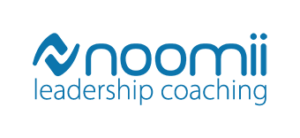
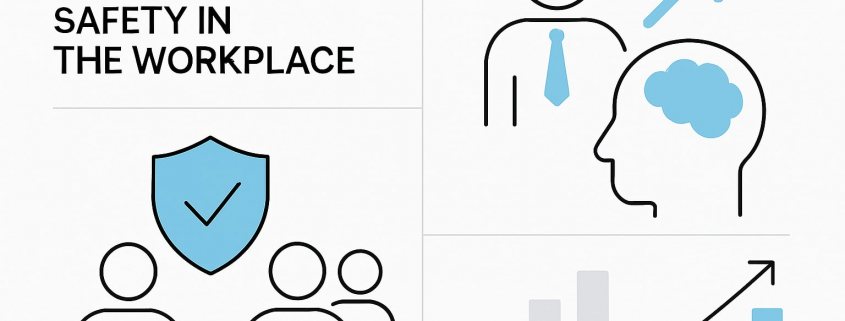


Leave a Reply
Want to join the discussion?Feel free to contribute!